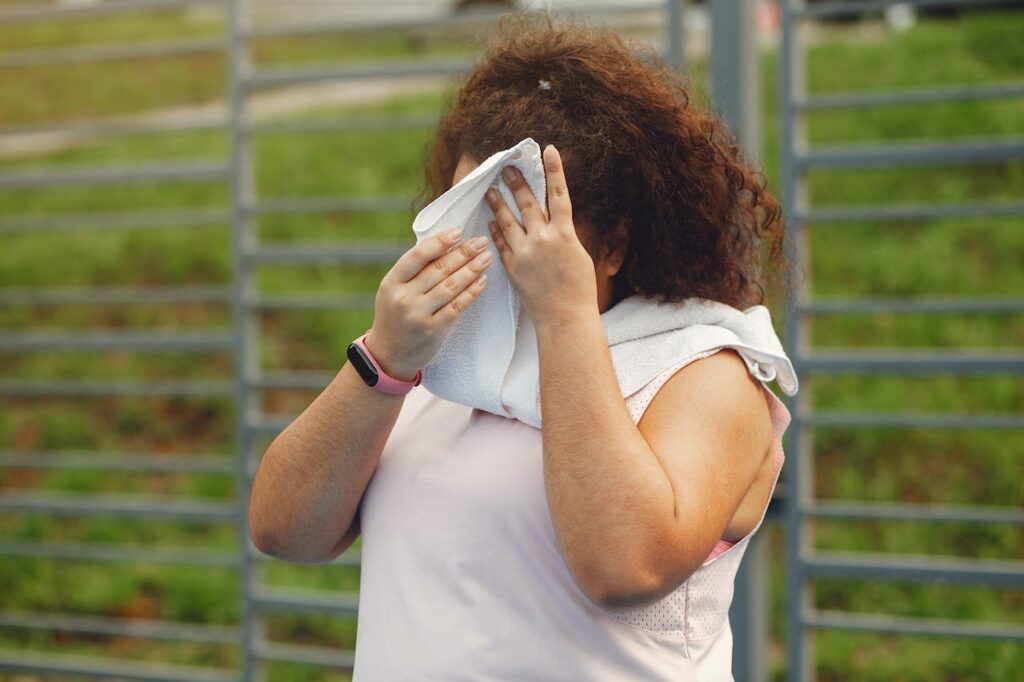
Summer is usually the time when most people choose to move. The combination of school holidays and sunny weather contributes to the popularity of moving during this time. It’s almost summer, and the moving should be cool and easy. The kids would be home from school and you would be able to get them to help you package and label some household items. Summer is usually a very popular time for people to get moving from one place to another; the weather around this time of year is sunny and great for moving.
Booking Your Movers in Advance
Most relocations occur from May to September, making early booking essential. Since most choose this time of year to move, there would obviously be a very high demand for moving trucks, whether you choose to move or hire professionals to do it for you. To ensure a smooth transition, one of our essential summer moving tips is to create a detailed timeline for your move, factoring in the unique challenges of the season.
The busiest time of year for movers is during the summer. This is due to a number of factors. The main reason for this is that children who don’t attend school during these months and working individuals both take vacation time during the summer. Additionally, the weather is undoubtedly nicer than in the winter, though you might want to avoid the time when the temperature is at its highest.
To navigate the high demand for moving services in summer, consider exploring different types of moving services. Full-service movers offer a comprehensive package, handling everything from packing to transportation. Alternatively, portable moving containers provide a flexible option, allowing you to pack at your own pace. Research and compare prices and services of different moving companies. Look for customer reviews and ratings to ensure reliability. Additionally, inquire about any summer-specific deals or packages that moving companies might offer.
Start Packing Early
When packing boxes, it is always best to reinforce the bottom of them so that they won’t burst during transit. Reinforce your boxes with blankets, foam, or Reinforce your boxes with blankets, foam, or bubble wrap for added security. Whatever you decide to use, make sure that you properly seal and label your boxes. For those boxes that contain breakable items, you would want to write “FRAGILE” on the box, just so the movers would know that they need to handle it with care.
Develop a systematic packing strategy to streamline the process. Start with items you use less frequently, such as seasonal clothing or rarely used kitchenware. Create an inventory list for each box, detailing its contents and the room it belongs to. This organization will be invaluable when unpacking in your new home. Consider using specialized packing materials for delicate items like electronics or artwork. For instance, anti-static bubble wrap can prevent damage to electronic items due to static electricity.
Prepare Your Furniture
When it comes to moving your furniture, you should always make sure that they are padded well enough with anything from a blanket to bubble wrap. This would prevent scratches on your furniture. To further protect against scratches to your furniture, you can also coat the wood with wax. For furniture with detachable legs, remove and pack them separately to avoid damage, as you would also need to remove the nuts and screws and place them safely in a Ziploc bag.
For larger furniture pieces, consider hiring a professional furniture disassembly service. They can efficiently dismantle your furniture, ensuring each piece is safely prepared for the move. This is particularly useful for complex items like modular sofas or custom-built units. If you’re doing it yourself, take photos before disassembling to aid in reassembly at your new home. Store screws and small parts in labeled bags attached to the respective furniture piece for easy reassembly.
Make Arrangements For Child Care
Make childcare plans to ensure a less stressful moving experience during the hot summer months. Moving day can be stressful and difficult, demanding your undivided focus and physical effort. If you have young children, plan ahead of time and arrange for child care so that you can concentrate on the move.
If arranging childcare is not feasible, prepare a ‘moving day kit’ for your children. Include snacks, games, books, and any necessary medications. This kit can keep them occupied and comfortable while you focus on the move. Also, consider designating a ‘safe room’ in both your old and new home where they can stay during the moving process, away from potential hazards.
Planning for Cross-Country Relocations in Hot Weather
Planning a long-distance move during the summer presents unique challenges, particularly when it comes to vehicle preparation, route selection, and arranging overnight accommodations. Preparing your vehicle for a long haul in hot weather is crucial. It’s not just about ensuring that the air conditioning is functioning; it involves a comprehensive check-up. This includes verifying the coolant system, tire pressure (as heat can affect tire inflation), and engine performance. Remember, a well-maintained vehicle reduces the risk of breakdowns in remote or excessively hot areas, which can be more than just an inconvenience; it can be a safety hazard.
Choosing the right route is equally important. While GPS systems offer convenience, they don’t always consider the challenges of summer heat. Opt for routes that offer rest stops with facilities, and avoid areas known for extreme temperatures during peak hours. It’s also wise to plan your drive times during cooler parts of the day. Early morning or late evening travel can be significantly more comfortable and safer. Additionally, consider the elevation changes along your route; higher altitudes can offer respite from the heat.
Lastly, the aspect of overnight accommodations requires thoughtful planning. Long-distance moves often require stopping for the night, and the choice of where to stay can impact your overall moving experience. Look for accommodations that offer lots of parking for moving trucks or trailers. Prioritize places with good air conditioning and facilities to refresh and relax. Booking in advance can save you from the stress of searching for a last-minute stay, especially in tourist-heavy areas during the summer. Remember, a well-rested driver is a safe driver, and ensuring comfortable overnight stops is key to a successful summer relocation.
Heat Sensitive Items
Be mindful when packing your stuff, as not everything can withstand hours of heat in a moving vehicle. The heat has the potential to harm some items. Be sure to pack these items independently.
Identify items that are particularly vulnerable to heat, such as candles, CDs/DVDs, and certain electronics. Our heat-sensitive moving tips include using thermal insulating materials for packing electronics and other heat-sensitive items, ensuring they remain protected throughout the journey. Pack these items in coolers or insulated boxes with ice packs to protect them from the heat. If possible, transport these items in your personal vehicle where you can control the temperature more effectively.
Stay Hydrated

Just picture how the moving day would go if you neglected to take proper care of yourself. Because the moving day will undoubtedly be tiring, it’s important to take care of your health. Along with drinking plenty of water, we would also suggest that you wear sunscreen and eat light, healthy food the day before your move as well.
In addition to water, consider providing electrolyte drinks to maintain hydration levels throughout the day. Set up a hydration station at both your old and new homes, with drinks readily available for everyone involved in the move. This is particularly important if you’re moving in a region with extreme summer temperatures.
Start Your Day Early
Start your day early, especially if you reside somewhere with a hot temperature. Make sure to avoid moving between the hours of 11 a.m. and 4 p.m., when the sun’s rays are at their strongest. Find a company that will consent to an early morning start.
Coordinate with your moving company to start as early as possible, preferably at dawn. This not only helps in beating the heat but also takes advantage of less traffic, making the transportation of your belongings quicker and potentially safer. If you’re moving long-distance, check the weather forecasts for both your current and destination locations to plan the best moving times.
Settling In
Start by unpacking the necessities like the kitchen, at least one bathroom, and a bedroom as soon as you can. Remember that you don’t have to unbox everything in a single day or even in a single week.
Prioritize setting up areas of your home that will provide immediate comfort and functionality. For instance, ensure the bathroom is fully stocked with essentials like toilet paper, towels, and toiletries. Set up a basic kitchen area with essential utensils, plates, and a few cooking items to make meal preparation easier during the first few days.
The Challenges of Summer Weather
But even while summer conjures up the brilliant sunshine in the nation, one also must not forget the rainfall that is also likely to show up as well. True, the rain is a welcoming change, especially when there have been days of record-breaking heat. And while those who work outside would welcome the rainfall to keep them cool, rain is indeed a mover’s nightmare that could very well impede progress during moving.
Prepare for summer-specific weather challenges like high humidity, which can affect certain items. Use desiccants in boxes containing items like books or leather goods to protect them from moisture. Also, be aware of local summer pests. Consider pest-proofing your belongings, especially if they will be stored for any length of time.
Handling Rain During Your Move
Don’t let light rain hinder your moving plans, but be prepared for adjustments in case of a thunderstorm. However, if it is a thunderstorm type of scenario, then you are better off changing the moving date. For those who cannot put off moving days because of legal landlord issues, then be prepared to put in that extra work to protect your furniture from the elements.
Cost Considerations
The cost of hiring movers can increase by up to 20-30% during the summer months compared to off-peak seasons. Be aware that during the peak moving season, securing a reliable moving service can be challenging due to high demand, so it’s advisable to book your movers well in advance. Expect higher costs for summer moves due to increased demand. During the peak season, demand for everything from storage units to movers is high. Families with school-age children are just more eager to move during this time since school is out for the summer. During the beginning and end of the summer, college students are also relocating into and out of their dorms.
To manage costs effectively, consider moving mid-week or mid-month when demand is typically lower. This can lead to more favorable rates from moving companies. Also, explore different insurance options to protect your belongings during the move, as summer moves can come with additional risks like heat damage or thunderstorms.
Prep and Move in Rainy Weather
For your furniture, it is best that you use some heavy-duty tarp to wrap or cover as well as plastic, the latter especially when covering mattresses and sofas. Avoid the use of shrink wrap as water can still seem into it. Moving the furniture to and from the truck in rainy weather can also be tricky. True, the top portion is covered and protected, but what about the bottom part of the furniture that may have to touch the wet or muddy ground? Moving experts would advise that you make a walkway out of either old carpets or rugs, for which you can drag the items into the house.
Get Water for Yourself and The Movers
Everyone is aware of how crucial it is to stay hydrated, particularly in the heat. Studies indicate that high temperatures can increase the risk of physical fatigue by 45%, emphasizing the need for hydration and breaks during summer moves. You don’t want to endure any uncomfortable heat stroke or dehydration symptoms on the day of your move. Prepare ahead of time by packing a cooler with water bottles. Make sure you have enough ice on hand to fill the cooler on a moving day and make sure everyone who is assisting with the move knows where to find the cooler.
Along with water, consider providing light snacks like fruits or granola bars. This can help maintain energy levels throughout the day. Also, set up a small rest area with chairs and a tent or umbrella for shade, offering a space for you and the movers to take breaks from the sun.
Beat The Heat
When it’s feasible, schedule your mover to show up early in the day while it’s still somewhat cool. Keep in mind to drink enough water, especially if you’re engaging in strenuous physical activity, and dress in airy, light clothing to prevent overheating.
Use portable fans or cooling towels to help stay cool during the move. If you have access to electricity, setting up a few fans in the loading and unloading areas can provide relief from the heat.
Keep Kids and Pets Safe

Over 30% of families report needing childcare services during their moving day. It’s better to keep children and pets off-site on a moving day. It will be easier to keep children secure, comfortable, and out of the way of the movers if they pass the day with friends or family. Set apart a space where they can unwind, play, eat, and sleep while someone is keeping an eye on them if this is not a possibility.
For pets, prepare a pet moving kit including water, food, a leash, and any necessary medications. Like children, pets can find moving days stressful, so consider a pet sitter or a safe, quiet space away from the moving activity.
Moving Day Precautions
On a moving day, ensure that you make the movers’ job as easy as possible. You can do this by using lots of sheets, towels, blankets, and whatever you can find to lay in the house to prevent the movers from slipping. You want to lay them out smoothly so that the movers would not trip or fall. Furthermore, you simply cannot ask the moving crew to remove their shoes when they enter your home. That’s why it is important to either spread material on the floor or simply have a mop handy to clean up the mess.
In addition to laying down protective materials, designate clear pathways in both homes for movers to follow. This helps prevent accidents and ensures efficient movement. Also, consider having a first aid kit readily available for any minor injuries that could occur during the move.
Post-Move Summer Acclimatization Tips
After the challenges of relocating in the heat of summer, making yourself at home in your new residence is equally important. The process extends beyond just unpacking of the truck; it involves adapting to a fresh environment, particularly when the climate varies from what you’re accustomed to. This is where the art of successful summer adjustment comes into play, turning your new dwelling into a cozy sanctuary.
To begin, gaining a thorough understanding of your new local climate is crucial. If you’ve relocated to an area with higher temperatures or humidity levels than you’re accustomed to, it’s important to adjust your living environment accordingly. Start by ensuring your cooling systems are up to the task. This may involve servicing your existing air conditioning system or investing in newer, more efficient models.
Portable air coolers or ceiling fans can also serve as excellent additions, offering a cost-effective means of maintaining a comfortable home. However, it’s not just about the hardware; consider the layout of your home as well. Rearranging furniture to avoid direct sunlight and using light-colored curtains can significantly reduce indoor temperatures. Keep in mind that it’s often the small changes that make the most significant impact in creating a cool and inviting living space.
Did You Know?
The Impact of Heat on Moving Trucks: While summer is a popular time for moving, the heat can significantly affect the interior of moving trucks. Temperatures inside a closed truck can soar well above the outside temperature, potentially damaging sensitive items. It’s crucial to understand that electronics, vinyl records, and certain types of plastics can warp or melt at temperatures as low as 100°F, which is easily reached inside a truck on a sunny day.
The Role of Local Microclimates in Summer Moves: When planning a summer move, it’s essential to consider local microclimates. For instance, a move from a coastal area to an inland location can involve a drastic change in temperature and humidity levels within a short distance. This can affect how you pack and protect your belongings, especially items sensitive to humidity, like wooden furniture or musical instruments.
Summer Moving and Real Estate Market Dynamics: The summer moving season coincides with peak activity in the real estate market. This can impact both the availability and cost of housing. For those selling a home before moving, this could mean a faster sale but also a more competitive and potentially expensive buying situation in the new location. Understanding these market dynamics is key to planning a successful move.
The Hidden Costs of Summer Moving: While summer moves are popular, they often come with hidden costs. For example, the high demand for moving services can lead to premium pricing. Additionally, the need for climate-controlled storage to protect belongings from heat can add unexpected expenses. Budgeting for these nuances is crucial for a stress-free move.
The Environmental Aspect of Summer Moves: Summer moves can have unique environmental impacts. For example, the increased use of air conditioning in moving trucks and storage facilities leads to higher energy consumption. Additionally, the likelihood of dehydration and heat exhaustion increases the use of single-use plastic water bottles. Opting for reusable water containers and eco-friendly packing materials can mitigate some of these impacts.
The Effect of Daylight Hours on Moving Schedules: Longer daylight hours in summer offer a unique advantage for moving. This extended daylight can provide more hours for loading and unloading, allowing for a more relaxed schedule. However, it’s important to balance this with the need to avoid the hottest parts of the day for health and safety reasons.
In conclusion, moving during the summer months presents unique challenges and opportunities. From the impact of heat on your belongings and the dynamics of the real estate market to environmental considerations and navigating traffic, each aspect requires careful planning and consideration. By understanding these nuances, you can ensure a smoother, more efficient relocation process. This guide aims to provide you with the insights and practical tips needed to navigate your summer move successfully, leaving you well-prepared and informed for this significant life transition.





moving in the rain is fine if you can back the truck close enough to the garage or the front door. We a have moved in a thunderstorm before. Thunderstorms are usually temporary and also some times unexpected. it is rare to cancel a move over a thunderstorm. also something to consider is box trucks don’t do to well in high winds due to the lack of aerodynamics.